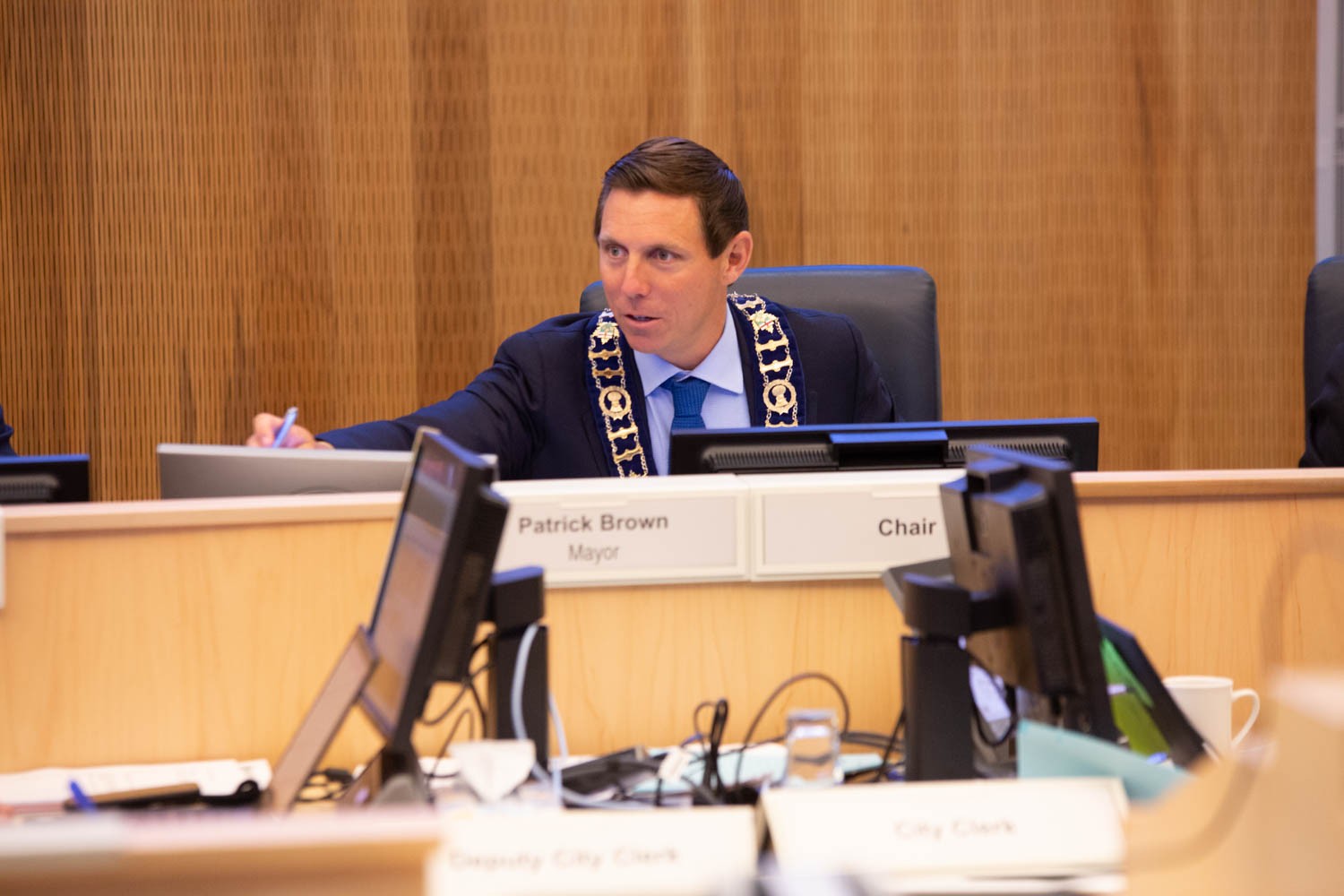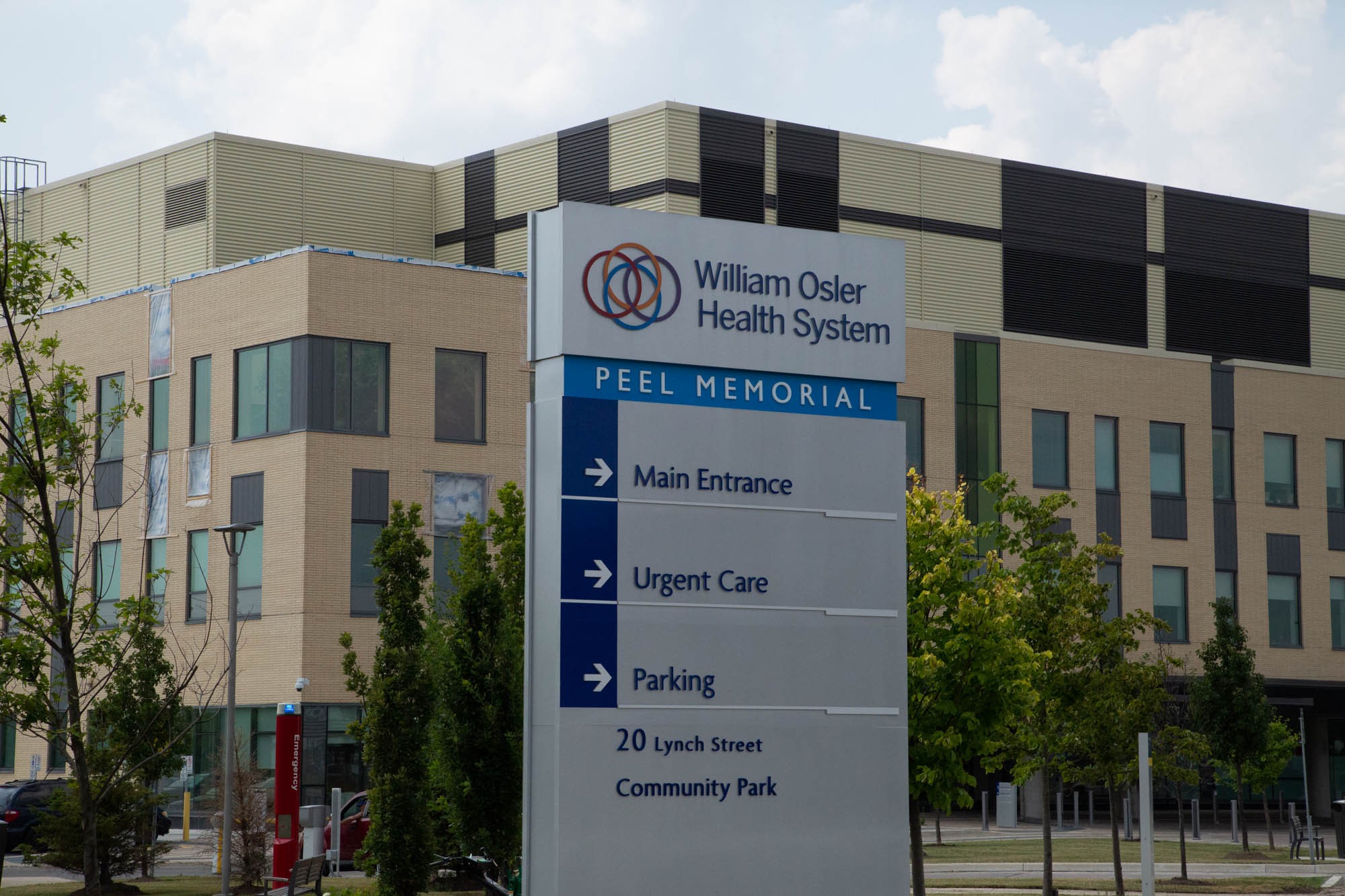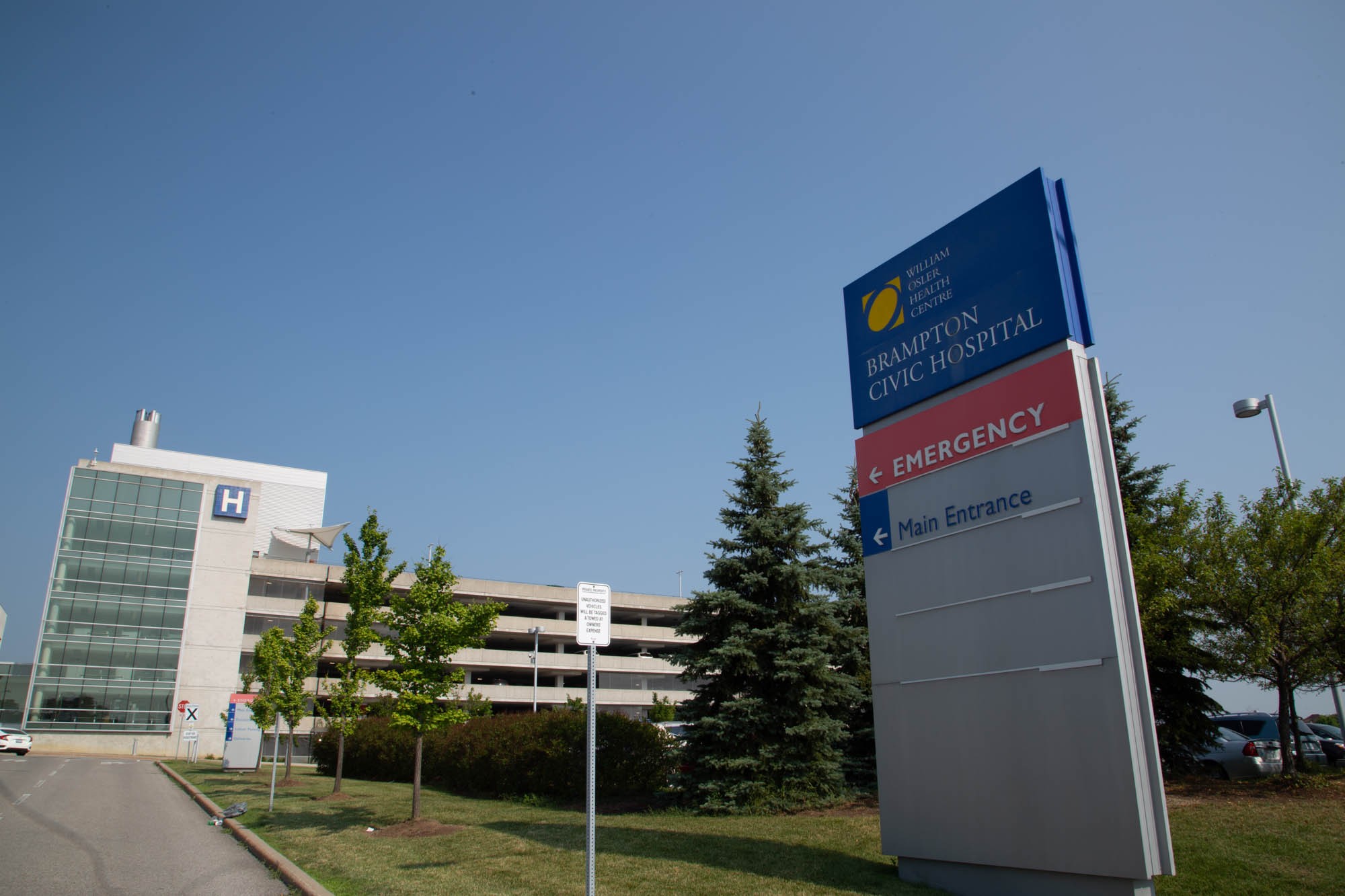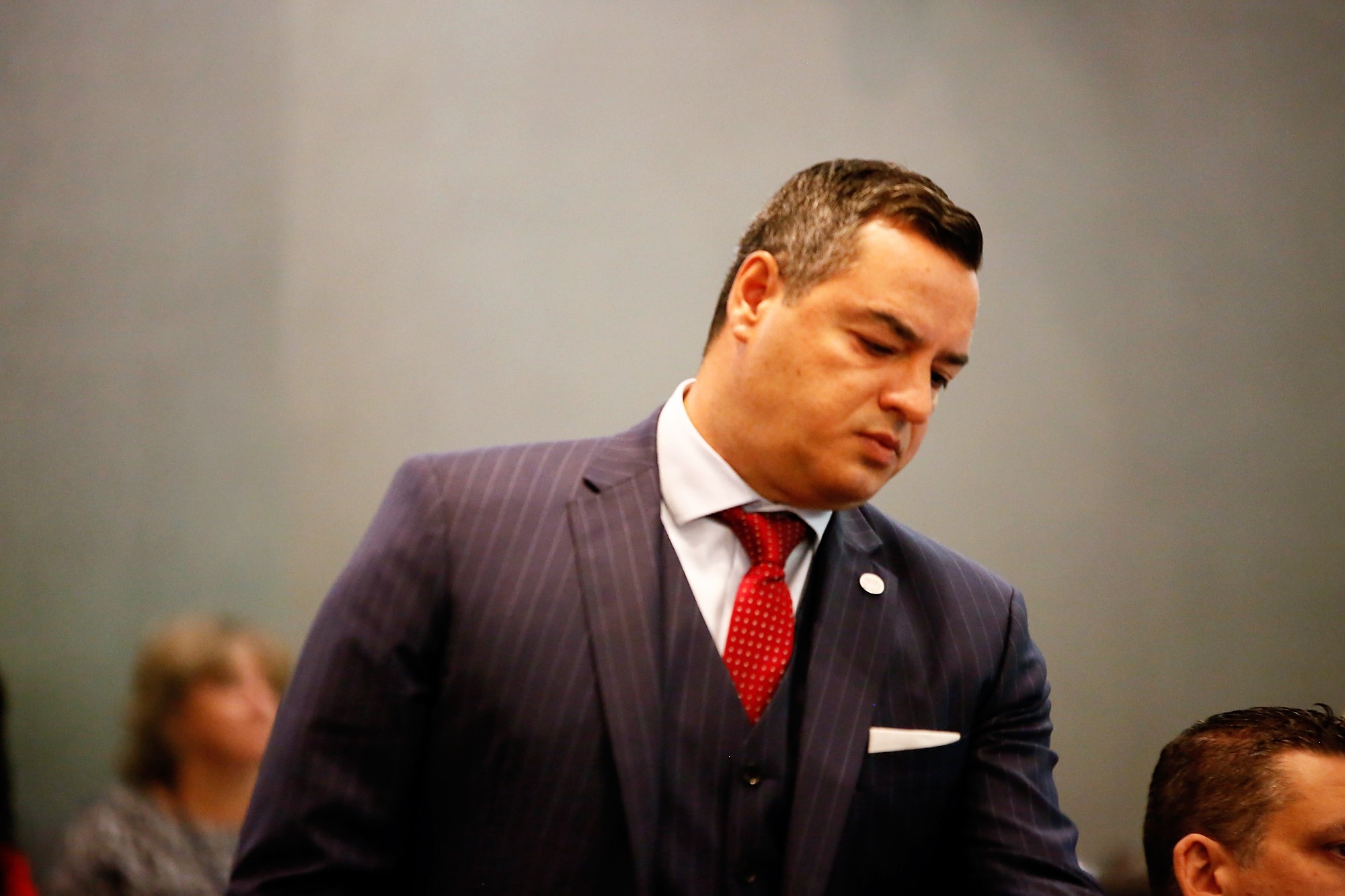
Hospital levy in the way of Brown’s desire for a 2020 tax freeze
Patrick Brown thinks high taxes in Brampton are scaring away potential investors, creating a cycle of low revenues and more burden for residential property owners who have to cover an outsized portion of the city’s rapidly increasing budget.
He wants another tax freeze for 2020, just like last year, but the need for a “gigantic” funding boost for the Phase-2 development of Peel Memorial hospital could prevent the fiscally conservative mayor from pushing the tax relief he instinctively wants.

Brampton Mayor Patrick Brown
“It’s premature to say where it will land,” Brown told The Pointer Tuesday, when asked if he will be seeking another freeze on the city’s share of the overall 2020 property tax bill. “But staff is working on 3 options for council: 0%, 2% and 4%,” he wrote in a message.
“Ideally we will have another tax freeze but I am also mindful of factors outside our control like provincial downloading to municipalities. The budget process will be very public and transparent. We will seek citizen engagement to help us determine [the] best balance.”
He also said that an unexpected blow from the province will likely add a “gigantic price tag” to the city budget for the expansion of Peel Memorial hospital. He was informed recently that the City will have to fund about 25 percent of the Phase-2 plan to expand the facility and possibly create the desperately needed second full-service hospital in Brampton.
That could mean $150 million or more will be covered by taxpayers and the William Osler Health System, which operates all hospitals in the city.

Brown told The Pointer this will likely mean a new levy, on the property tax bill, will have to be added this year in order to secure provincial funding to get the badly needed additional hospital beds. It’s unclear how large a levy might be introduced and what the impact will be on property owners.
It’s also unclear why Doug Ford’s Progressive Conservative government is asking for a 25 percent local commitment from Brampton when the common funding formula under provincial guidelines only calls for a 10 percent local contribution. The Pointer is waiting on a response from the province to explain the discrepancy as Brampton considers next steps.
With the new year in full swing, municipalities across the country are setting up their budgets. For Brampton, the exact date the budget will be made public hasn’t yet been revealed. But there are a number of other details residents can begin thinking about.
The 2020 budget will follow an unprecedented year in Brampton when property owners saw a 1.1 percent property tax increase in 2019. The raise came solely from the Region of Peel. The province’s education portion was not increased and the City of Brampton imposed a tax freeze for its share of the overall property bill to keep rates down.
In order to examine if this tax freeze could take place, a number of city departments were audited. At the time, the task brought reluctance from chief administrative officer Harry Schlange who ended up getting fired. It also looked like a tax freeze was what residents wanted too. While deliberating taxes for the 2019 budget, city staff polled residents on what level they thought property taxes should increase by, with 68 percent voting for the tax to stay frozen.
The 2019 tax freeze was part of Mayor Brown’s mandate when he was elected. While he made good on his promise to implement the freeze, this course of action may not work well for the city in the future. Brampton is grappling with a large infrastructure gap that is predicted to get worse in the coming years. The 2019 budget showed the infrastructure backlog for the city was $246 million, a number which could climb to $743 million by 2027 if not attended to. As the second fastest growing city in Canada, with a population of 642,000 residents, keeping up with infrastructure is a necessity for Brampton.
The Pointer reached out to Wards 3 and 4 regional councillor Martin Medeiros, who is also chair of the city’s planning and development committee. The councillor said the backlog is being dealt with by an infrastructure levy. The levy, which sits at 2 percent, is a dedicated source of funds raised through tax dollars, specifically used to address Brampton’s infrastructure needs and has been approved by councillors in successive budgets since 2016. Medeiros couldn't provide a specific figure for how much money the levy has raised to date. He hopes that the provincial and federal governments provide more money for infrastructure in the city, something he says is advocated for through the Federation of Canadian Municipalities and the Association of Municipalities of Ontario.
Another item that’s suffering in Brampton is wait times in hospitals. Data obtained by the Ontario NDP through an access to information request in October 2019 found that Brampton Civic Hospital has been operating at 101 percent to 106 percent capacity for the year. Peel Memorial hospital was operating at 557 percent capacity at the start of last year, a number that increased to 587 percent by April. Brampton’s hospitals have been struggling for years and not much has been done to address this matter. Things could change moving forward in the form of a special hospital levy, which is just another way of saying, a dedicated tax.

With these concerns in mind, Medeiros remains unsure if a zero percent property tax increase is the best road for Brampton to go down again. He says his decision will be based on what’s best for the city. “I want to get a five-year outlook because I’m not going to support [any options] without understanding the long-term impact. I want to see clearly that we found efficacy and savings and that we’re delivering value to residents.”
Along with a yearly budget, the city also provides a projection as to what costs will look like two years into the future, and the estimates for the 2020 budget are larger than last year.
The budget proposals for 2019 projected a 4.9 percent increase for 2020 and a 4.5 percent increase in 2021. These numbers do not take into account the snowball effect of freezing taxes in 2019, a decision popular with residents, but one that pushed the financial burden of a lot of city projects into the future.
As part of the 2019 budget discussions, councillors were provided with a list of more than $740 million in crucial projects they will have to find funding for in the near future. That list did not include the city’s share of the approved Main Street LRT and the cancelled Downtown Reimagined plan, considered a catalyst to drive large-scale investment in the city. That could add up to $1 billion that will need to be found from other revenue sources.

Councillor Martin Medeiros
This doesn’t rule out the potential for a tax freeze altogether.
The city’s finance staff found a variety of ways to reduce spending in last year’s budget in order to accommodate the infrastructure levy as well as a dedicated fund for transit projects.
For example, initially, the city planned to take out $80 million in debt to support the Centre for Innovation and Connected Learning. However, the city only took out $30.6 million, saving the city $1.77 million in servicing that debt for 2019. It’s not clear whether that decision had any impacts on the timeline for the project.
The city also delayed a number of projects across the city in order to achieve the tax freeze last year.
There was a notable reduction in the city’s investment into public works projects (parks, traffic calming, parking), dropping from a planned $148.3 million in the 2018 budget to $127.1 million in 2019. Capital works projects, such as road widening and resurfacing and improving active transportation infrastructure, also dropped from a planned $113.9 million in the 2018 budget to $94.2 million in 2019.
Delayed projects include things like installing new library furniture, which has been pushed off to 2021 despite a report in late 2018 that showed a quarter of the city’s library assets were in “poor to very poor” condition. Some facility repairs and replacements have also been delayed, with that budget dropping from an initial $16.1 million projected in the 2018 budget to $13.6 million this year.
Road projects were also hit: some $600,000 worth of bridge repairs were pushed down the line, and the widening of Goreway Drive and Chinguacousy Road was put off to 2021. The cost of that project — a big issue for frustrated drivers caught up in traffic — has already been bumped up by $1.3 million from the initial $8 million estimate.
These delayed projects only complicate the budget process for Mayor Brown and council, meaning city staff will need to be even more creative in not only juggling projects that were planned for 2020, but also accommodating work that has been shucked off from previous years.
It will be difficult moving forward to get a similar idea of what is being projected in future city budgets. Following a decision by council last year, the city has stopped providing such projections. Mayor Brown explained during budget talks last year that the removal of such information from documents and the city’s website was meant to prevent scaring off potential private sector investors from partnering with a city that has large tax increases on the horizon. The previously projected increases around the five percent range for this year and the next are numbers that Brown said council will simply not accept.
Brampton’s operating budget for this year was $709 million, which covers all expected expenses related to running the city and includes items like salaries. The capital budget for 2019 was $384.2 million, which includes money for long-term infrastructure projects.
The 2019 budget projected the capital budget for 2020 would be $431.5 million. The largest chunk of money, more than $199 million, is allocated towards community services. Out of that $199 million, $180.3 million is designated for the construction of new buildings, including the Howden Recreation Centre and the Transit Maintenance and Storage Facility. Last year there was no projection for a 2020 operating budget.
Another sign the 2020 budget could be in distress is the cancellation of six budget meetings last year. These meetings were dedicated to council to set its priorities for the next year. One possible reason for the cancellation is the long to-do list council faced in its first year of office. As previously reported by The Pointer, City Clerk Peter Fay said the list of items council had to deal with was almost at 130, while a list that only includes top priorities shouldn't have more than 60 items. It included topics that the city has no influence on, such as a motion to oppose Quebec’s controversial Bill 21, which bans certain religious symbols, and the class action lawsuit against opioid manufacturers.
While final numbers for the budget are unclear, discussions surrounding service reviews began in November of last year. Medeiros said deliberations are expected to take place in the second last week of February.
Submit a correction about this story


